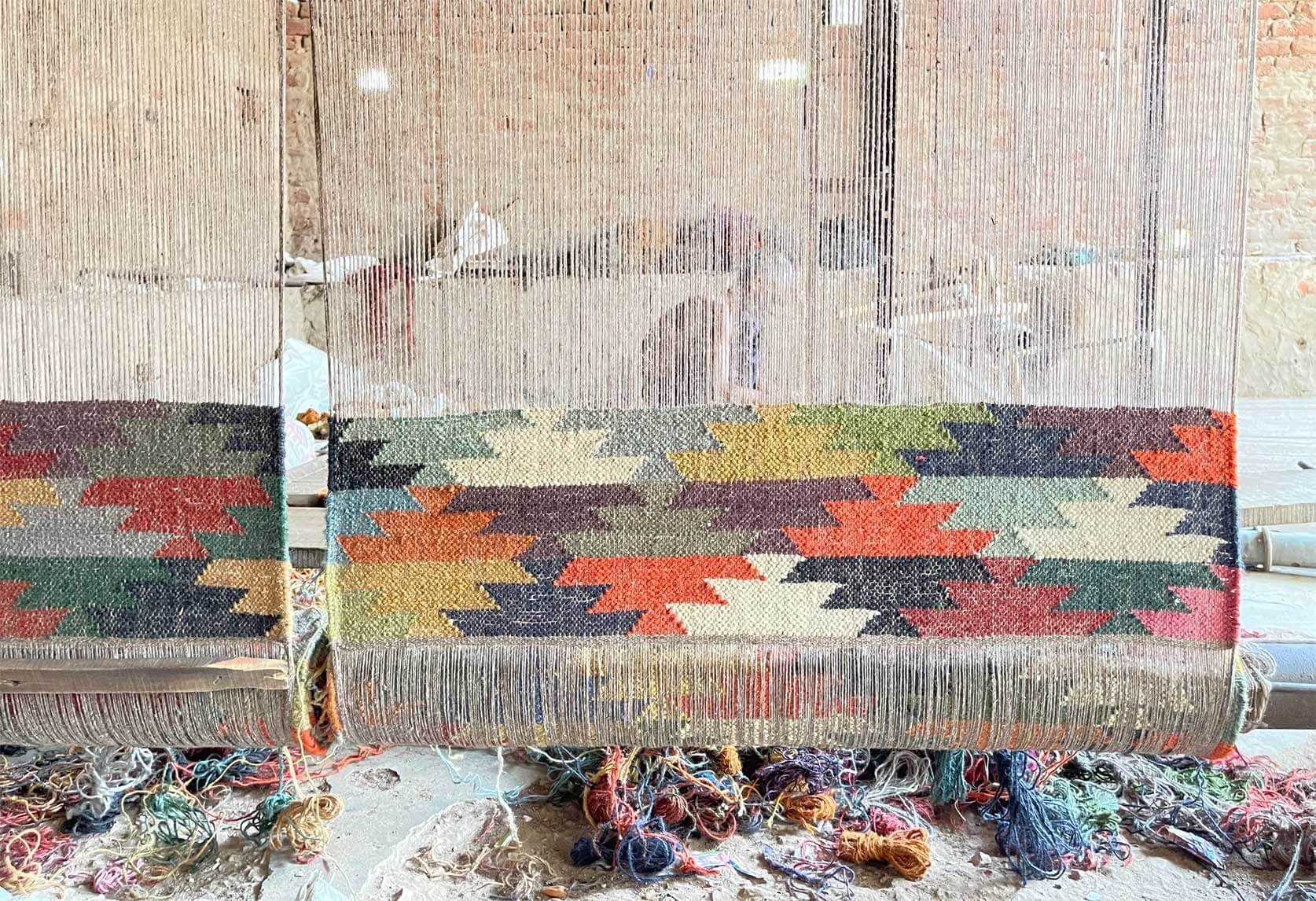
Rugs are the symbol of luxuriousness in home décor. For ages; this accessory has been using to cover up the floor and give the space a lavish feeling. These handmade beauties are curated by years of experience, manual process, and utmost care. The warmth of the artisans’ hand travels to the cold floor to make it comfortable for your footsteps. It will make the home cosier.
Rugs look good everywhere, including the living room, bedroom, or even kitchen. Apart from the aesthetic beauty, it is a treat to our feet, especially during winter and monsoon.
The rugs are made of the wildest imagination of the artisans who elegantly crafted these pieces of beauty. Irrespective of size, material, shape, colour, technique, texture, and design; you will get immense opportunity to explore. Since their inception, rugs are telling the stories of different cultures, traditions, and even civilizations. From motifs to knitting; every aspect represents a different time and space.
Let’s take a walk through the pavilion of history to know about the initiation and journey of rugs.

History of Rugs:
Though the Millenials have made rugs from every possible material, the reeds and grasses are the most primitive material for rugs. The ancient tribes used these two materials to make the rugs that were used to make the ground warm during winter.
The first reference of rugs was found over 5,000 years ago when a Nomadic tribe made the accessory using the hair of sheep, goat, and camel. Even in Egyptian and Mesopotamian civilizations; the archaeologists had found the existence of rugs in their tombs more than 4,000 years ago.
Interesting, the oldest existing rug is the Pazyryk carpet which was made during 500 B.C. In 1949; the rug was discovered in Siberia. Though it is the oldest carpet, the technique was extremely advanced and intricating in respect to that time. The colours of the fibres are still very rich. All of these are evidence of the fact that they had professional carpet clearer at that time also.
Rugs are manufactured in different places and depending on their place of origin, the classification of rugs. Turkish rugs, Caucasian rugs, Indian rugs, Turkmen rugs, and Persian rugs are the most famous and popular among all. Apart from these countries; there are many other places where the rugs have been crafted for years
In the earlier times, all the rugs were handcrafted by the painstaking weaving process. with time, the introduction of technology has made it easier and more affordable. However, even today, the finest and luxurious rugs are still handmade with the love, care, and craftsmanship of the artisans.
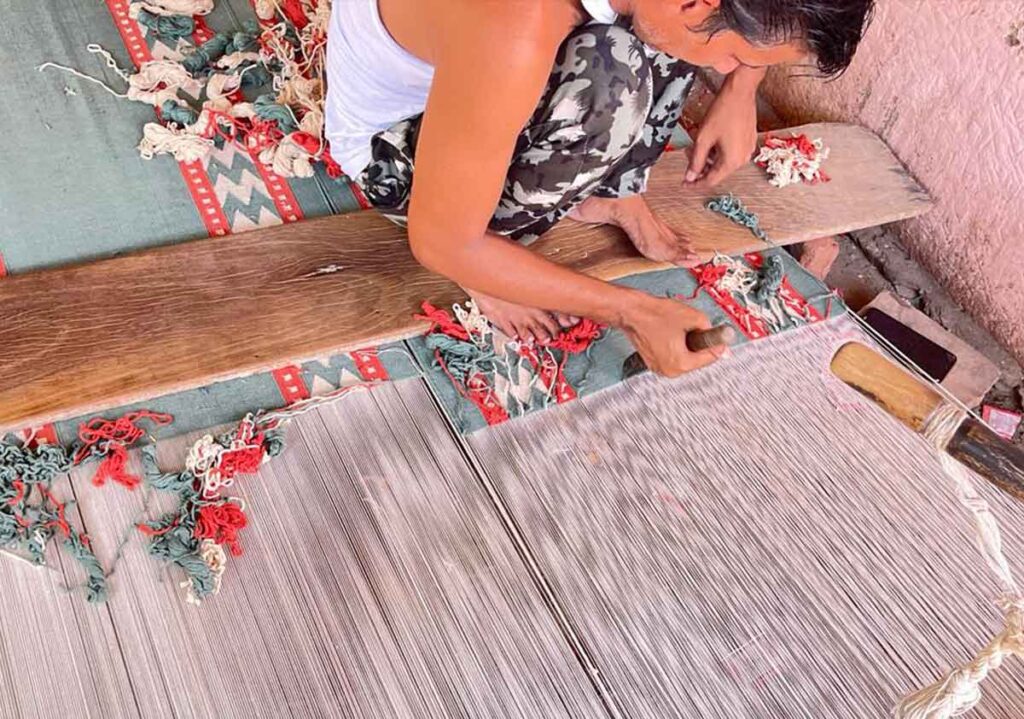
History of Indian Rugs
Indian rugs makers are experts in producing handmade carpets in different designs and colours. They especially make select the patterns and colour combinations for the overseas buyers along with the affluent class of the society. However, Indian rugs are available in low, medium, and high qualities for which people can afford them as per their requirements. The Indian style of carpet weaving is relatively rapid and can produce more rugs in lesser time.
The speciality of Indian rugs is the blending of different varieties of yarns to produce one exceptional piece. They use diverse raw materials as well. Even the modern designs of Indian rugs have a blend of tradition and cultural heritage.
The handmade carpet industry of India is one of the oldest as well as popular all over the world. The weaving technique is an assortment of weaving patterns of China, Persia, and Afghanistan. It can be predicted that the carpet weaving technique was brought by the Mughals to India. We can observe some of the exquisite carpets in that era that are still preserved to date. With time, the Indian weavers have explored different colour palettes and upgraded their style of weaving to create more beautiful and exclusive products.
Different Types Textiles and Design of Rugs:
Each and every design of rugs symbolizes some wonderful yet complex aspect. In the earlier time, the authentic designs of the rugs were the reflection of the place of origin. The rug makers took inspiration from the surroundings and culture and weaved the designs. Interestingly, one can understand the time and place of origin of the rug from the design itself.
Let’s take a look at the different types of rugs.
Cotton Rugs
Cotton is the most common and popular foundation for rugs. This vegetable fibre is quite strong and not elastic like wool. And for that reason, the weavers can maintain the tension easily with this yarn.
While making rug foundation with cotton, they can easily weave tightly straight-sided and evenly-proportioned rug. This is the reason behind the preference of urban and court weavers towards this material as the foundation of the rug.
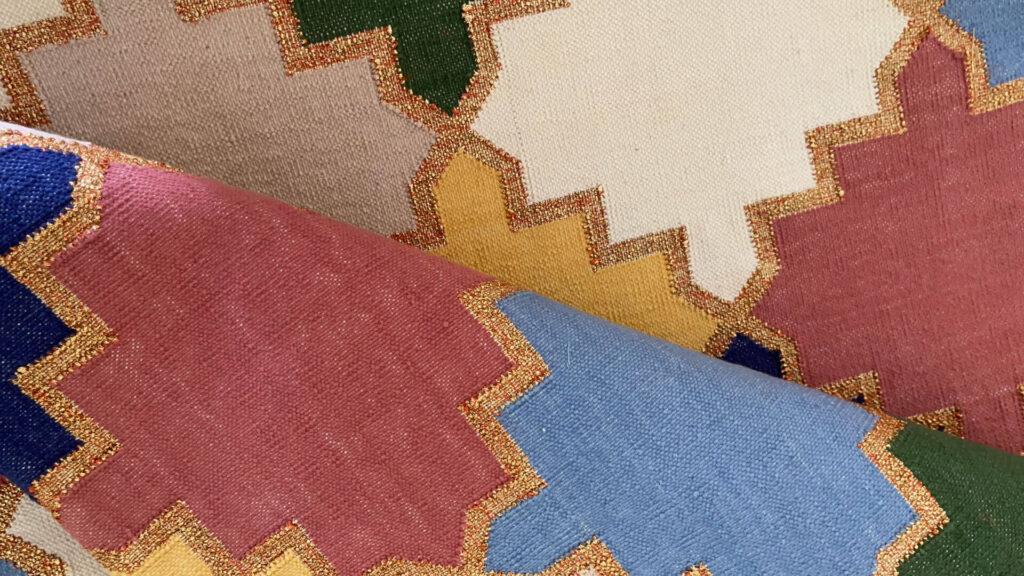
Silk Rugs
Silk rugs are made of either 100 per cent pure silk or some other materials blended with the silk. The luxurious shine you can see on the silk rug is unique. The texture of the rug is fine, soft, and lavish to touch.
These luxurious rugs are quite delicate and should be preserved for low-traffic spaces. Nowadays, you will find alternatives like rayon and viscose in the market but they are not as durable as silk.
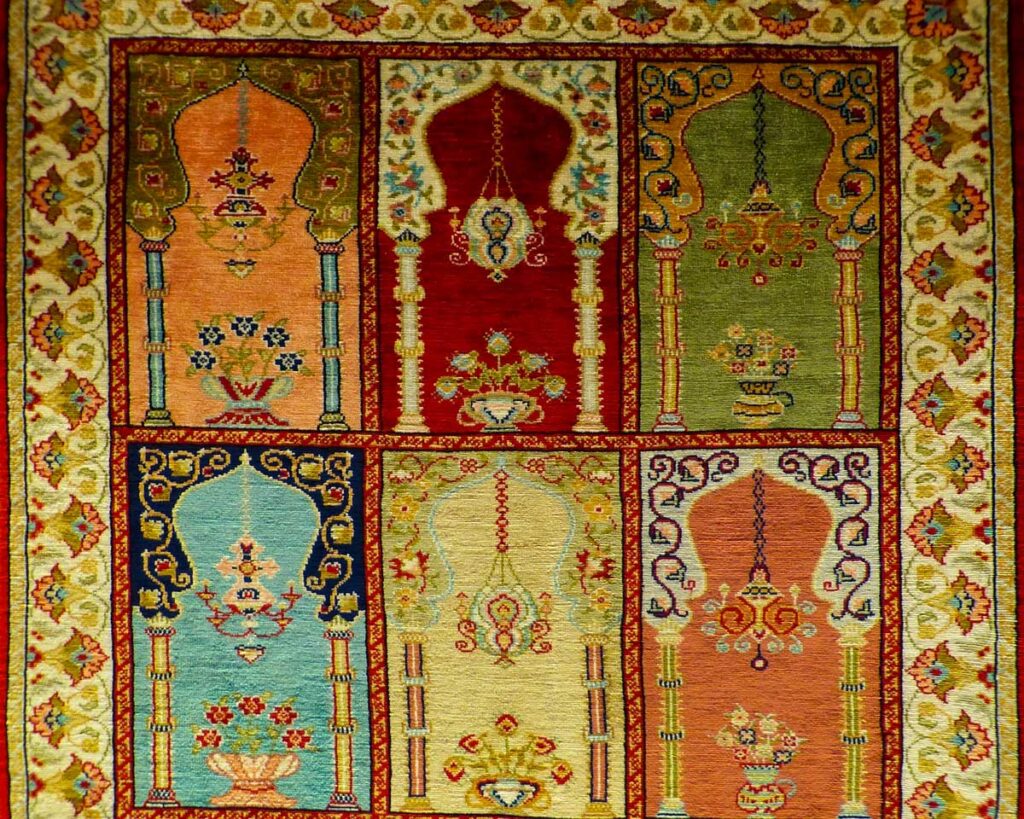
Jute Rugs
To add some coastal vibe to the indoor, jute and bamboo rugs are the best option. These rugs made of natural fibres are considered an affordable way to add texture to the room. However, it is a little tough to clean the watermarks. If you are intending to use it outdoor then make sure they are approved for exposure.
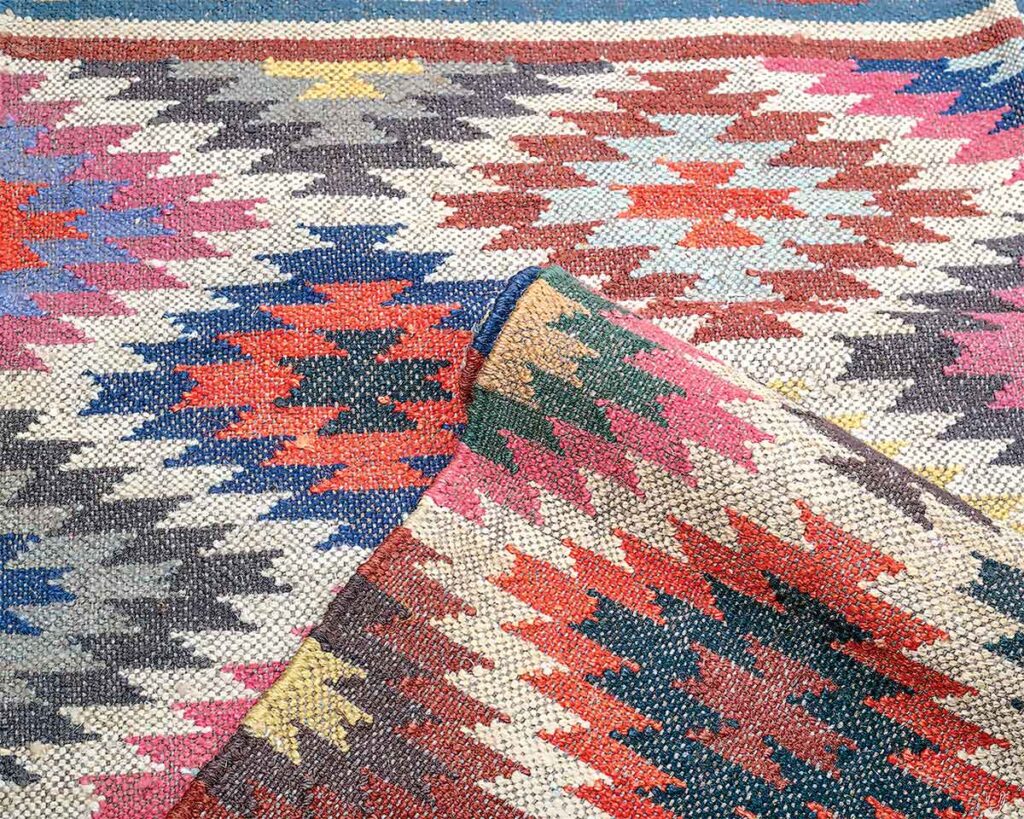
Wool Rugs
Among the natural fibres; wool is quite popular all over the world as the material for rugs. Traditionally, the woollen rugs were made hand-woven, hand-tufted, and hand-knotted by experienced artisans. There was no use of electrical machinery as all the processes were executed by the handloom only.
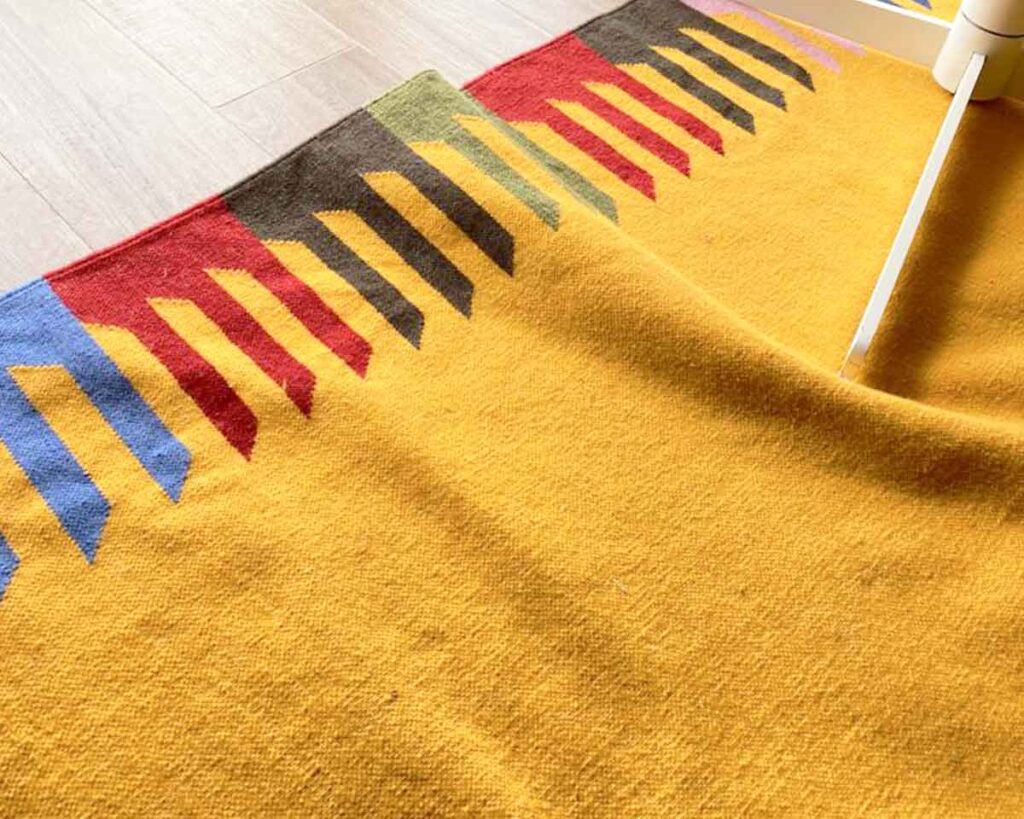
At present time, you will find woollen rugs which are made by machine loom but most of them are made from synthetic fibres.
The rugs made from original wools are very expensive as the work done by the artisans is extensive and time taking. It takes lots of effort, time, and craftsmanship to produce wool rugs of excellent quality. Often these rugs are considered an heirloom and passed down by generations. These rugs are quite robust in nature and for that, they are ideal for rooms with high traffic.
Moreover, the texture of the wool is soft and comfortable. These materials carry bright and beautiful colours as well. Along with these, you can easily clean any sort of spills from it. They just need frequent vacuuming to maintain the shine.
The process to make the Rugs
Making rugs needs intense effort, craftsmanship, patience, and knowledge. However, there is a difference in the way of producing a rug. Depending on the place of origin; the process of manufacturing differs. Here we will discuss the various weaving to make the rugs.
Tufted Rugs
Though carpets are known to make by knots, this tufted process does not include any sort of knotting. In this weaving technique, the yarns’ loops are pulled through the rugs with the help of a backing material by a machine or hand-held tool. To create a smooth cut-pile surface, the loops of the yarns are shared.
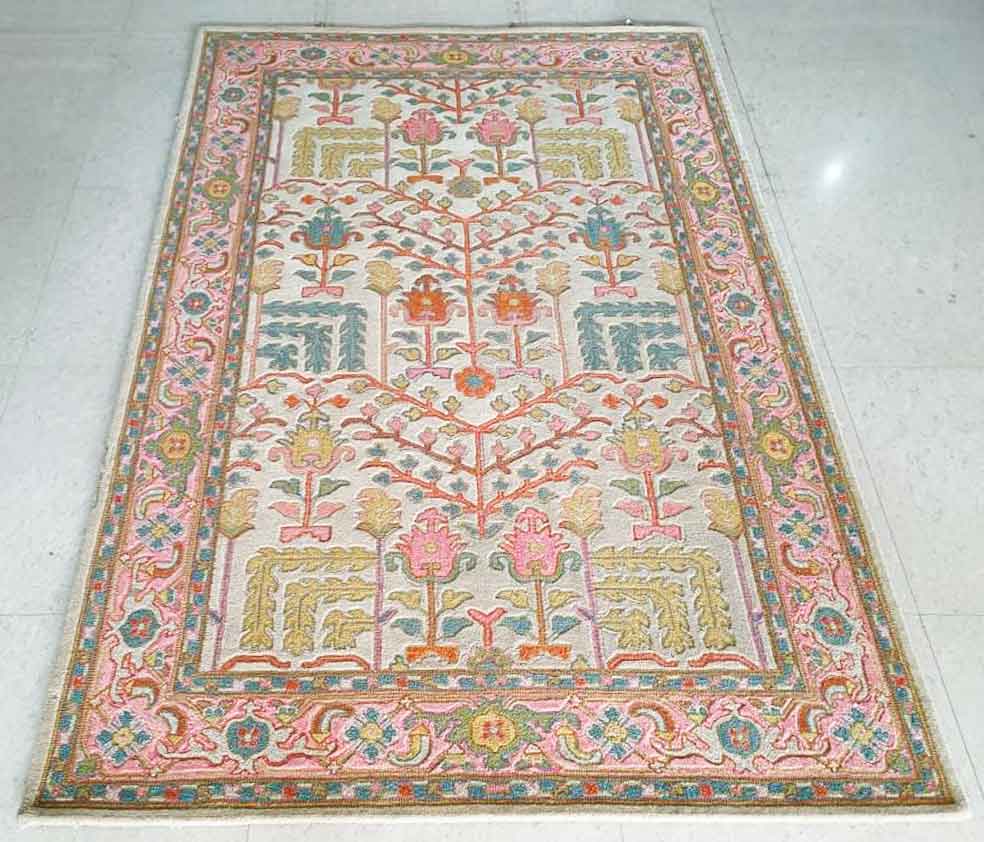
As this process is not as much time taking as the knotted rug, the productivity is relatively quick. For the same reason; these rugs are affordable too. However, it will be shed quite frequently and for that, it needs to clean with a vacuum cleaner frequently.
Hooked Rugs
This process is quite similar to the tufting, but the yarn loops stay exact in the position. The artisans pull the yarns with a hooking needle through the backing material of the rugs. The loops of the hooked rugs look like embroidery.
Flat Waves
The flat waves are woven in a loom and for that reason, they don’t have a pile. This process can be done either by hand or by machine. It is a process of weaving wraps (vertical yarns) with wefts (horizontal yarns). As there is no backing in this woven process, these rugs are reversible and o9ne can use them from both sides.
Hand-Knotted Rugs
This is the most integrating and intense laboured work of the rug. Here the weavers make individual knots that will wrap the yarns which will make the rug’s length. These knots make the surface and the pile of the rugs. As the whole process is manual, you will not get two exact-looking hand-knotted rugs.
How to clean rugs:
To complete the look of a posh interior; rugs are mandatory. Whether you like chick or classy; the rugs can change the appearance of the space. However, to keep up the shine, you need to maintain it with care. Cleaning the rugs can sound like extensive work but when you know the right way, you can easily do it.
It is always better to use a homemade cleaning solution than the store-bought one. It will naturally clean the carpet without any harm to the texture. Moreover, it will smell fresh. With respect to carpet, the rugs are more delicate. To keep the rugs in good condition, you need to apply a different cleaning technique.
It is the nature of the rugs to accumulate dust particles. And to keep up the shine and lustre, you need to get rid of those dust before they settle on the texture. For that, you have to turn the rug upside down and then only vacuum cleaner to remove all the dirt. Now you need to flip it again and clean again with the vacuum cleaners. If the rug has a tussle, take extra care while cleaning.
Cleaning of Rugs:
Wool and Cotton Rugs
As a material, there is no substitute for wool. They are durable, colourful and to some extent waterproof. Sadly only one con of woollen rug is that the fibre holds dirt more than any other material. Cotton as it belongs to the same category of natural fibre as wool has the same pros and cons.
Fortunately, other than frequent vacuuming to clean the dust and dirt; there is not much additional maintenance required for these rugs. For wool rugs, it is very important to vacuum cleaner for the first few months as it sheds a lot. You should not feel scared to see the shedding as only the loose fibres will remove in the process.
Jute Rugs
Jute is known as quite tough material and it does not collect dirt easily. For that reason, they are very easy to clean. All you need to do is occasional vacuuming. However, it is better to avoid water on a jute rug as it absorbs moisture quite quickly. As it takes too much time to dry, eventually that extra moisture attracts mould, mildew, and bacteria. If you spill water on a jute rug, instantly dry it with hair dryers.
Tips To Deep Clean a Rug:
In case, there are already set-in stains, a deep cleaning is required. Before even you think to rent an expensive machine to clean it up or hire a professional carpet cleaner; try the following tips which are safe, easy, and convenient. Surprisingly, most of the cleaning items are household things that we use in our daily life.
Mild Shampoo or Detergent:
If you have special rug shampoo, then you can clean it with it following the given instructions. In case, you don’t have it, a mild dishwashing detergent is also perfect to clean the rug. You need a bucket of warm water to wash the stain off. However, before starting the process, test the solution in a small part for colourfastness. First of all, take a garden hose and clean the rug thoroughly. Then clean the stain with a soft brush without providing much pressure. Now clean again with the hose and get a clean rug instantly.
Dry The Rug:
Before you place the rug on the floor, you need to ensure that it is completely dry. Rugs of different materials take different times to dry. In case, you keep a wet rug inside your house, it will eventually become the house of mould, mildew, and insects. It will lead to a pungent smell and damage to the floor as well. Keep the rug where it will get bright indirect sunlight. If you don’t have much light, use fans to speed up the dry process make sure, you should dry that up from both sides.
Again Vacuum Cleaning:
After the rug dries up completely, you need to vacuum clean once more so that all the loose dirt remove instantly. The rug will look brand new after the completion of the cleaning.
Buy Quality handmade rugs online for your living room, bedroom, kitchen, office and more. Angela Jey is an online store in Hong Kong offering handmade area rugs, floor rugs and carpets in a range of colours and styles.